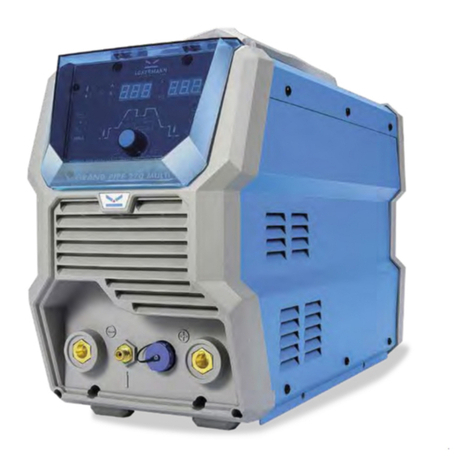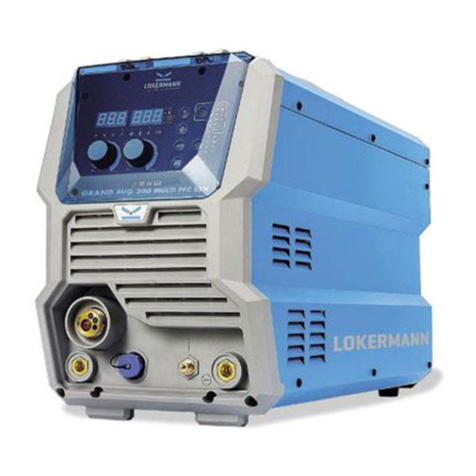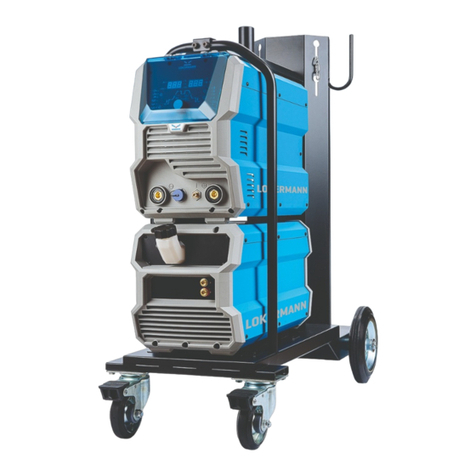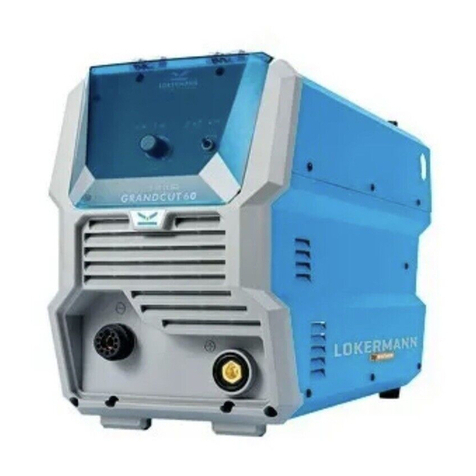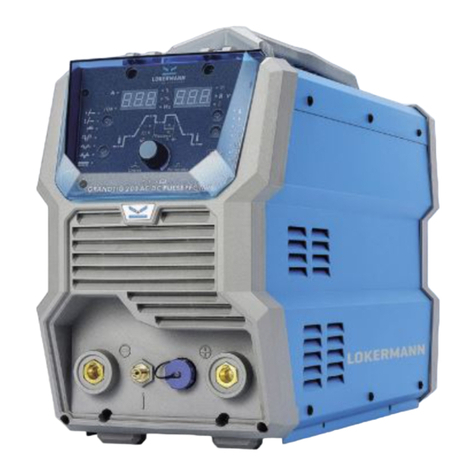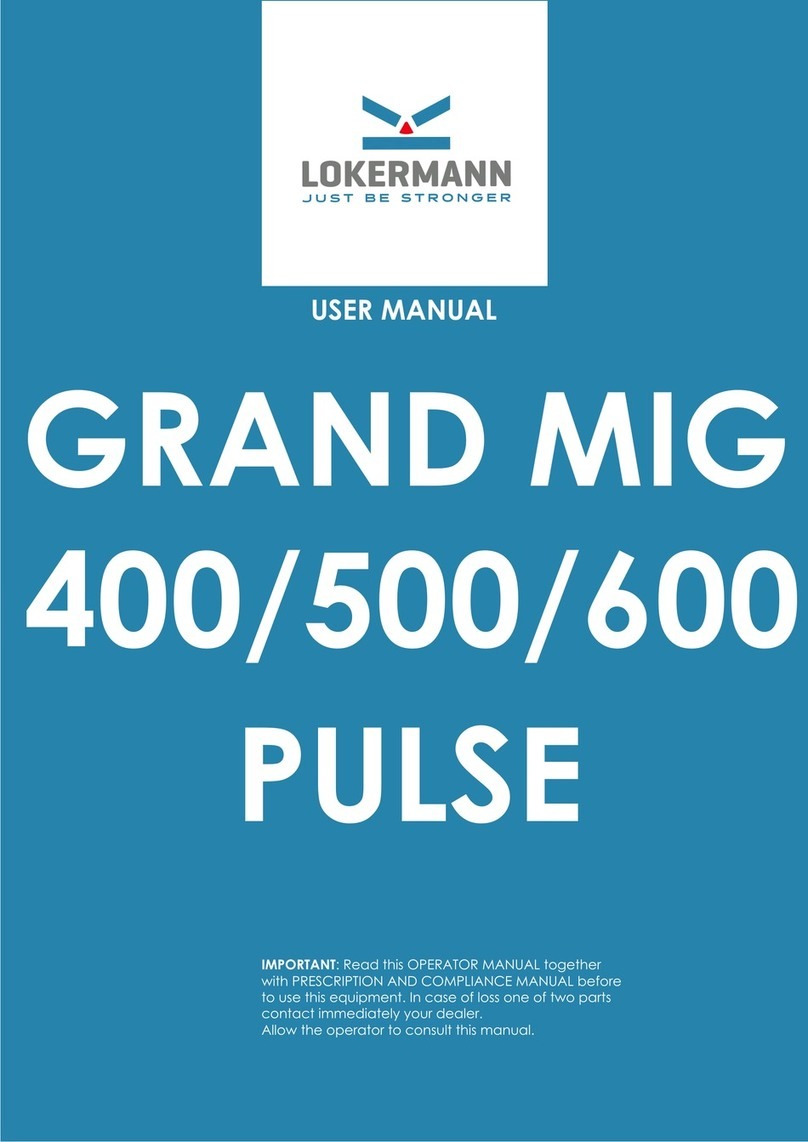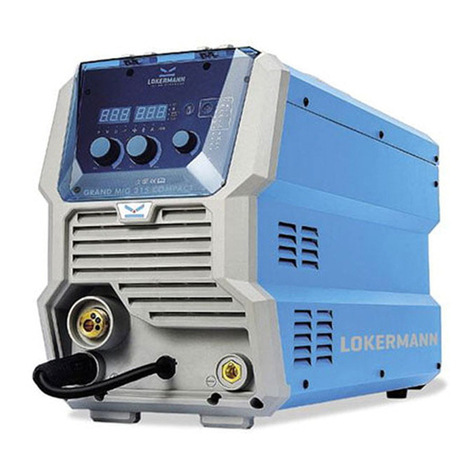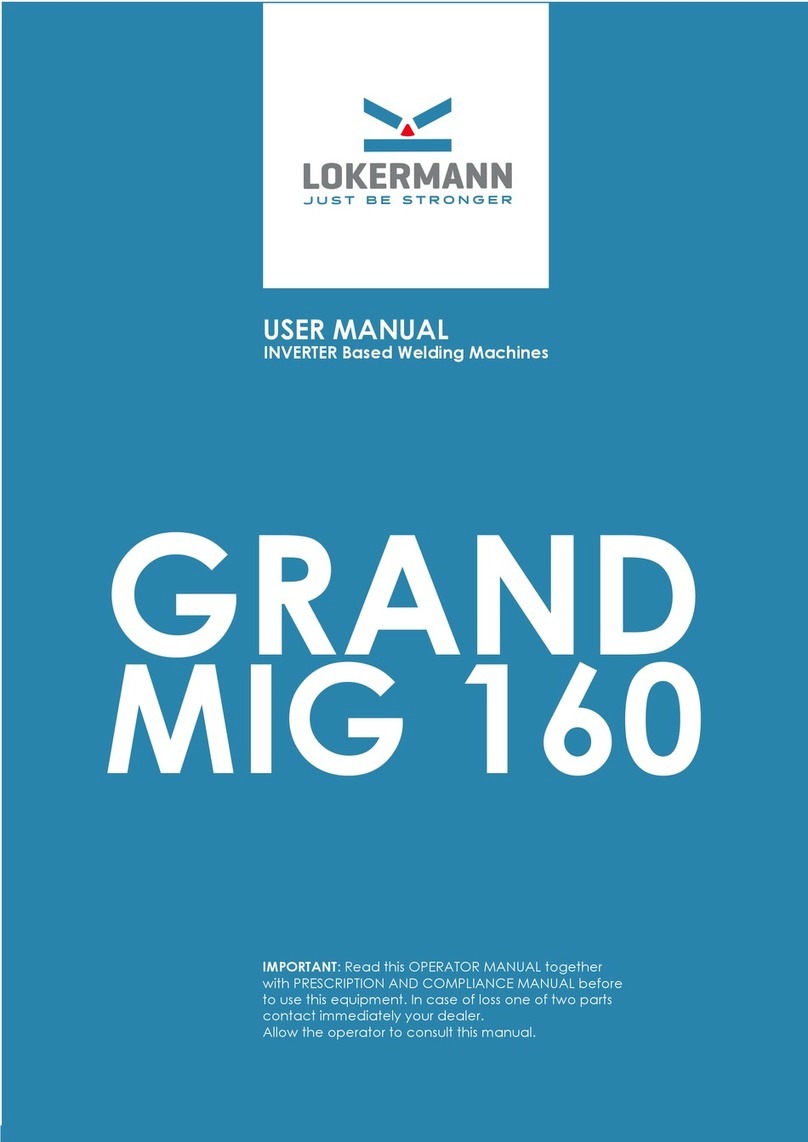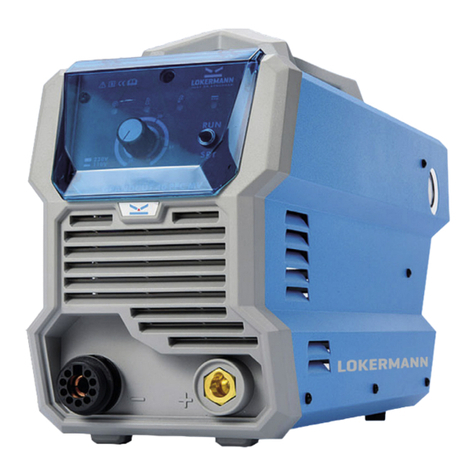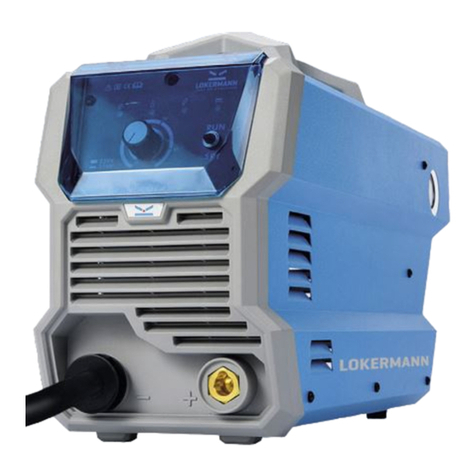
.3 Brief Introduction
MA
series of welding machines adopt the latest Pulse Width Modulation (PWM) technology
nd the Insulated Gate Bipolar Transistor (IGBT) power modules. It uses switching frequencies in
he 20KHz-50KHz ranges so as to replace the traditional line-frequency transformer type welding
achines. Thus, machines are characterized with portability, small size, lightweight, low energy
onsumption and noise, etc.
MA
series of welding machines
has
excellent performance: constant current output makes
elding arc more stab le; fast dynamic response speed reduces the impact from the arc length
luctuation to the current; accurate stepless current adjustment and pre-setting function. There are als
ome automatic protection functions for under voltage, over current, over heat, etc. inside the welder
hen the problems listed before occurred, the alarm light on the front panel is on and at the same
ime the output current will be cut off. It can self-protect, prolong the us efull life, greatly improved
he reliability and pract icality of the welding machine.
MA series of welding machines can also realize TIG operation. While MMA operation, if the
lectrode touches workpiece over two seconds, the welding current will drop to the minimum curren
utomatically to protect the electro de. While TIG operation, the minimum current will be outputted
irstly until the arc is ignited by lifting method, the output current will rise to the preset value, which
an protect the electrode.
MA series of welding machines is widely used in Petroleum, chemical, mechanical,
hipbuilding, architecture, boiler, pressure container, military industry and Maintenance work, etc.
his machine has high duty cycle even in the 40℃, which can keep the continuous operation. The
rame is Stability of the machine,which can keep working under high temperature and corrosion
nvironment.
MMA: Manual Metal Arc welding;
PWM: Pulse-Width Modulation;
IGBT: Insulation Gate Bipolar Transistor;
TIG: Tungsten Inert Gas welding.
.4 Duty cycle and Over-heat
he letter “X” stands for Duty Cycle, which is defined as the portion of the time a welding machine
an weld continuously with it’s rated output current within a certain time cycle (10 minutes).
he relation between the duty cycle “X” and the output welding current “I” is shown as the right
igure.
f the welding machine is overheating, the IGBT over -heat protection sensing will send a signal to
he welding machine control unit to cut the output welding current OFF and light the over-heat pilot
amp on the front panel. In that case, the machine should not be welding for 10-15 minutes to cool
own with the fanrunning. When operating the machine again, the welding output current or the dut
ycle should be reduced.
